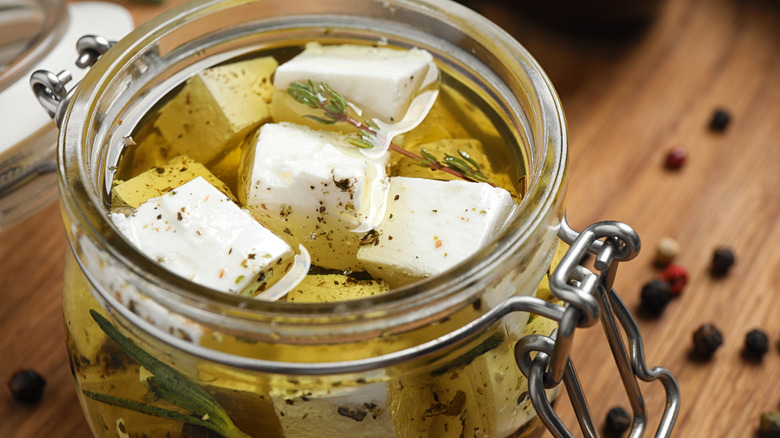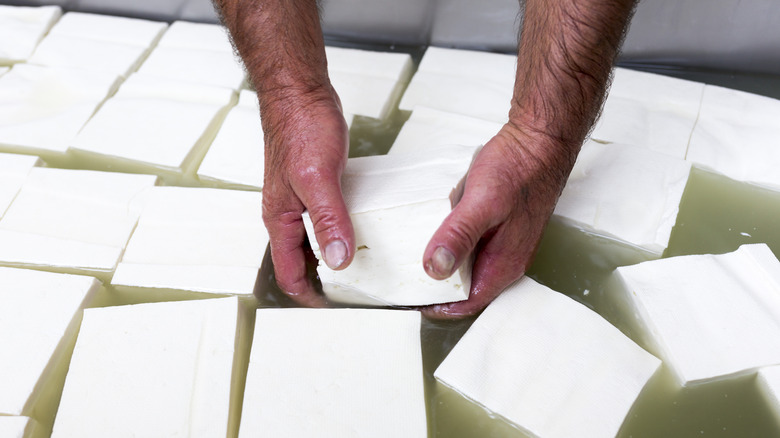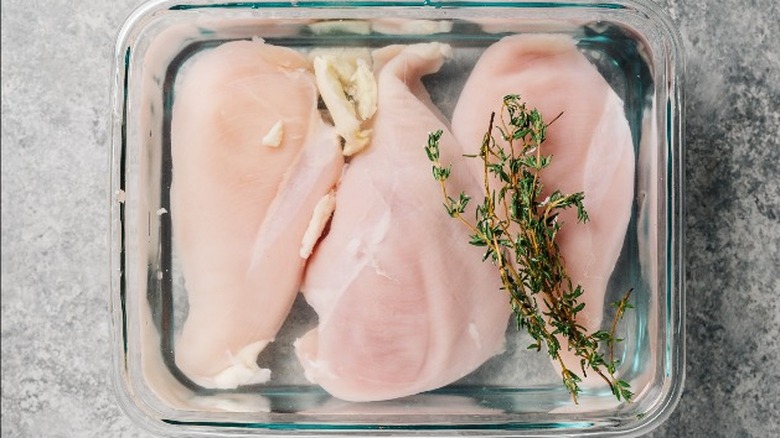You Should Only Buy Feta Cheese In Brine. Here's Why
Feta has an international fandom, but it's most associated with Greece. Feta is widely considered Greece's national cheese and plays a vital role in classic dishes such as spanakopita. But feta's ancient cultural ties go deeper than food alone, popping up in seminal works of art and literature. Britannica notes that Homer's "Odyssey" features a cheesemaking scene that closely mirrors the production of feta. But that said, it's a mistake to think feta is exclusive to Greece.
While Greek feta is tangy and sharp, French feta has a mild flavor profile that makes it exceptionally versatile. Bon Appétit notes that the French variety tends to have a softer, creamier texture that makes it great for whipping into a tasty dip or spread. Bulgarian feta isn't as well-known, but it has a semi-firm texture that lies between the firm Greek and soft French versions. Bulgarian feta also has a distinct flavor that's typically saltier than the other two.
All three are worth your attention, but heed this word of caution: You should only buy feta if it's packed in a tub of brine. You should avoid the pre-crumbled and vacuum-packed stuff — here's why.
Feta brine serves many purposes
Why bother brining feta in the first place? After all, you don't see blue cheese, gouda, or chevre (or any other cheese, for that matter) floating in a tub of saltwater. Well, feta is a unique cheese that requires unique treatment, and keeping it in a saltwater brine accomplishes a few important things in regard to taste, texture, and longevity.
Epicurious explains that feta dries out quickly when it's exposed to air. As this happens, the flavor becomes increasingly sour. Submerging the cheese in brine protects it from the air, keeping it moist and balancing the flavor profile.
Buying feta in brine also ensures that it will keep for longer, similar to the way a saline brine preserves pickled foods. According to Does It Go Bad, brined feta has a substantially longer shelf life than the dry variety. Let's say you open a container of crumbled feta and only use a small handful on your salad. If you put the leftovers in your fridge, they will last around five to seven days, so you'd better find another use for them fast. On the other hand, leftover feta stored in brine will keep for about a month, so you don't have to race as quickly to use it up.
What to do with leftover feta brine
When you purchase feta in brine, you're getting two products in one, because the leftover liquid has a multitude of culinary uses. For starters, it makes a great brine (thanks, Captain Obvious) that you can use for turkey, chicken, and other meats.
As Cook's Illustrated explains, brining meat changes its protein structure and traps moisture within the muscle to keep it tender and juicy. Usually, you'd make a saltwater solution for this purpose, but Food52 notes that leftover feta brine is a convenient and waste-reducing shortcut. Try submerging chicken (either whole or in pieces) in your leftover brine and refrigerate it for a couple of hours. When you cook it, it should come out nice and moist.
One of the more creative ways to use leftover brine is to cook grains or beans in it. Food52 recommends substituting ¼ to ½ of the cooking liquid used for rice, beans, or other grains and legumes with feta brine to season them as they cook. You can also add a splash of it to bread or pizza dough to add a slightly salty, tangy kick. Bon Appétit has a few more ideas for using leftover brine, including adding it to salad dressings, broths, and braising liquids. You can also blend some of it with the feta itself to use it as the base for a creamy dip.


